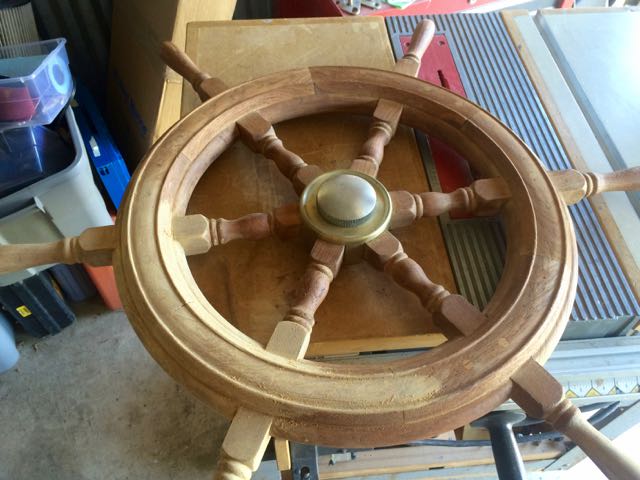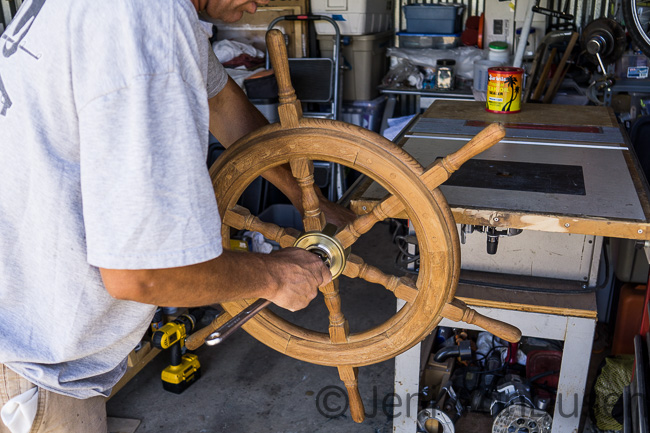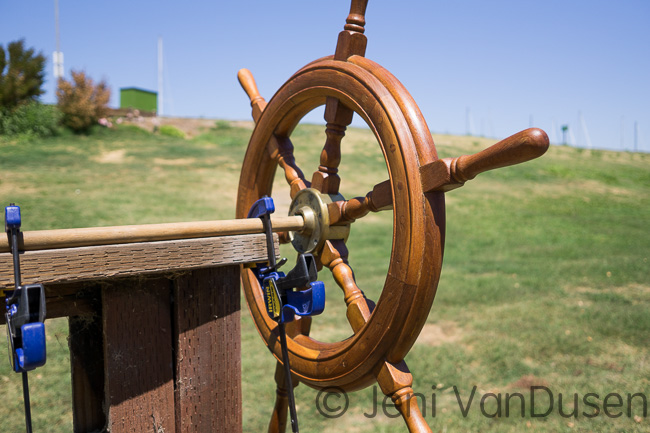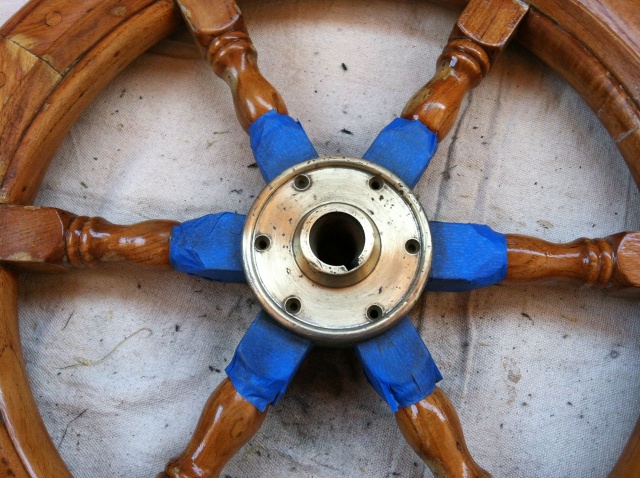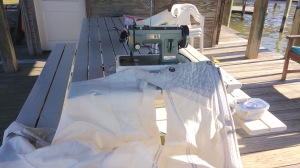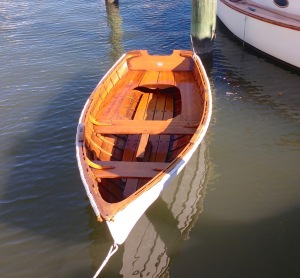Guilty.
I am guilty as charged.
Yes, there has been an unconscionable gap in posting to this blog - it's just that not everything in our lives is related to boating, and a bunch of that stuff came up recently. OK, enough of the Mea Culpa.
Eolian's refrigerator compartment is huge for a boat. But because it is so tall, much of the space in it either goes to waste, or we spend a long time sorting thru piles of things in there with the door open, looking for something.
Something had to be done.
I decided to make a shelf that would add 50% to the horizontal storage space in there, and put some of that vertical space to use. Because I am a professional scrounge, I have a good collection of teak scraps discarded by others, gleaned from the dumpsters. I brought some of this, and a collection of tools to the boat:
 |
| Some of the tools |
 |
| Making a mess of the dock |
The trick in building this shelf was that it needs to be removable, yet it needs to stay in place with a load of food on it when the boat is in a seaway. I was most worried about the shelf tipping over toward the door when on a starboard tack. Here's how I dealt with that:
- The left-hand support bracket has a foot that goes all the way to the door, about twice the length of the bracket. With this extension, it would be very difficult indeed to tip the shelf on this side.
- On the right-hand (aft) side, I made the last of the shelf boards extend behind the holding plate, preventing any movement on that side.
 |
| Three pieces, with clever interlocking |
Yes, the shelf slats seem to be sort of unevenly spaced from side to side. This is because the left-hand side of the reefer is deeper than the right-hand side due to hull taper.
Sadly, in my first attempt at making the side brackets, I failed to take into account that the rear wall of the reefer matches the hull contour. So I had to redo the brackets. In fact, every board was custom cut and fitted because of the hull contour and because the hull is tapering in as you go aft (to the right in the picture).
But in the end I got it. And we've added 50% to our reefer storage.
 |
| Et voilà! |

